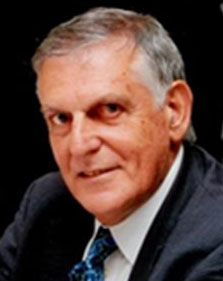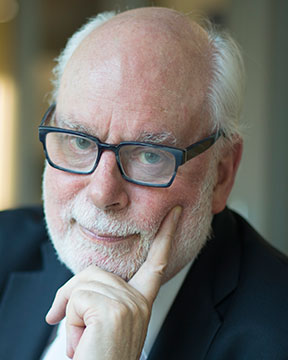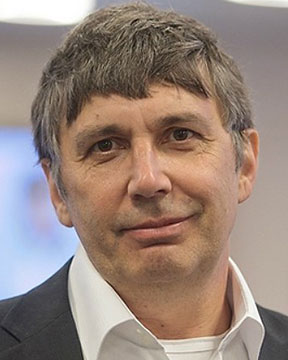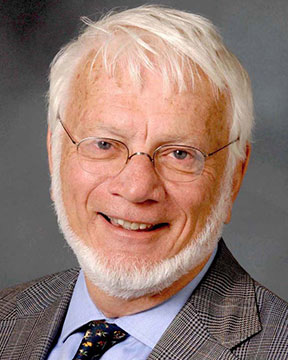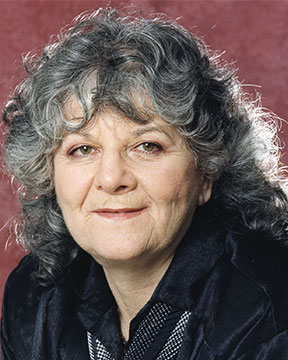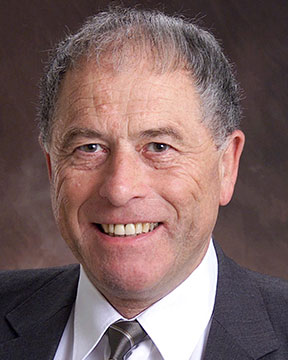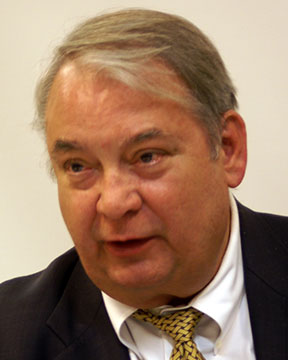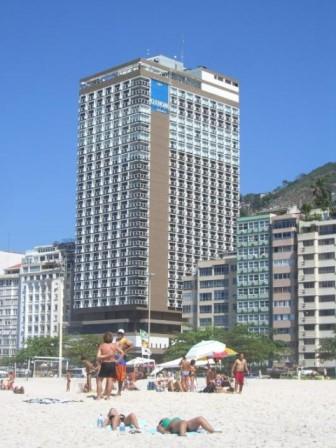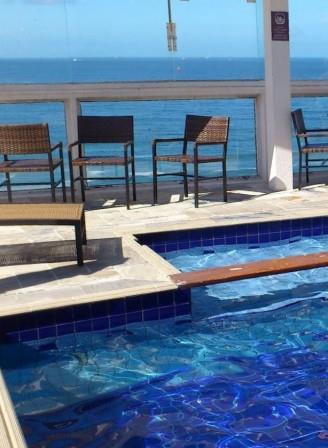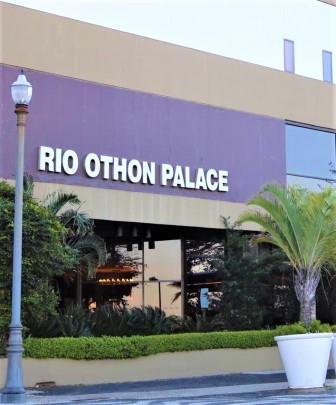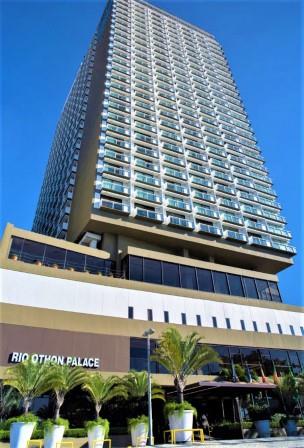ORALS
SESSION: ElectrochemistryMonAM-R2
| Amatore International Symposium on Electrochemistry for Sustainable Development |
| Mon Nov, 5 2018 / Room: Copacabana B (150/1st) | |
| Session Chairs: Emmanuel Mousset; Session Monitor: TBA |
12:10: [ElectrochemistryMonAM03]
Electrochemical Activation of Carbon Dioxide for the Synthesis of Chemicals Christian
Amatore1 ; Alessandro
Galia
2 ;
Onofrio
Scialdone2 ;
1CNRS & PSL, French Academy of Sciences, Paris, France;
2University of Palermo, Palermo, Italy;
Paper Id: 63
[Abstract] To curb the negative effect of carbon dioxide as a greenhouse gas, an interesting approach is the utilization of Carbon Capture and Conversion (CCC) methodologies. These recycling technologies are focused on the use of CO<sub>2</sub> waste as a feedstock for the production of industrially relevant chemicals. In the past years, increasing attention has been devoted to the electrochemical conversion of CO<sub>2</sub>, which would combine the utilization of excess electric energy from intermittent renewable sources with the selective conversion of CO<sub>2</sub> into added value products. Furthermore, it would be possible, in order to reduce the costs, to use the excess of the daily produced electricity, not matching actual demand energy, that is usually lost or not properly used. Researches have shown that several products, including carbon monoxide, formic acid, methane, methanol, ethylene and oxalic acid, can be obtained by this process. Furthermore, it has been shown that carbon dioxide can be introduced in the backbone of other molecules, generating fine chemicals with high economic value, such as anti-inflammatory drugs, by cathodic reduction in aprotic solvents
In this work, various routes for the electrochemical conversion of carbon dioxide will be presented and discussed from both a scientific, technical and economic point of view, such as the synthesis of formic acid in water (in conventional and pressurized cells) or the electrocarboxylation of aromatic ketones and benzyl chlorides in organic solvents, in order to illustrate the current scenario.
References:
[1] S. Sabatino, A. Galia, G. Saracco, O. Scialdone, Development of an electrochemical process for the simultaneous treatment of wastewater and the conversion of carbon dioxide to higher value products, ChemElectroChem 4 (1), 150-159, 2017.
[2] O. Scialdone, A. Galia, G.L. Nero, F. Proietto, S. Sabatino, B. Schiavo, Electrochemical reduction of carbon dioxide to formic acid at a tin cathode in divided and undivided cells: effect of carbon dioxide pressure and other operating parameter, Electrochimica Acta 199, 332-341, 2016
SESSION: ElectrochemistryTuePM2-R2
| Amatore International Symposium on Electrochemistry for Sustainable Development |
| Tue Nov, 6 2018 / Room: Copacabana B (150/1st) | |
| Session Chairs: Lauro Tatsuo Kubota; Session Monitor: TBA |
17:10: [ElectrochemistryTuePM212] Invited
Innovative Electrochemical Processes and Reactors for the Treatment of Wastewater Onofrio
Scialdone1 ;
Christian
Amatore2 ;
1University of Palermo, Palermo, Italy;
2CNRS & PSL, French Academy of Sciences, Paris, France;
Paper Id: 62
[Abstract] The electrochemical treatment of wastewater contaminated by organic and inorganic pollutants resistant to conventional processes is considered a very promising and appealing approach. The most interesting processes are the electrochemical direct oxidation, the indirect oxidation by electro-generated active chlorine, and the electro-Fenton. However, various problems limit the potential application of such methodologies [1], such as the cost of electric energy necessary to drive the process; the costs due to the addition of electrolyte for wastewater with low conductivity; the low current efficiencies due to the low mass transfer for low concentrations of pollutants.
In this work, various innovative approaches to solve or minimize such problems will be presented and discussed, such as the utilization of microfluidic cells (for both direct anodic oxidation and electro-Fenton) [2,3], pressurized reactors (for electro-Fenton) [4], microbial fuel cells [5] and reverse electrodialysis [6].
It will be shown that the utilization of such processes can drastically improve the performances of various electrochemical processes for the treatment of wastewater. In particular, the activation of various molecules able to oxidize organic pollutants will be discussed.
References:
[1] C.A. Martinez-Huitle, M.A. Rodrigo, I. Sires, O. Scialdone, Single and coupled electrochemical processes and reactors for the abatement of organic water pollutants: a critical review. Chemical reviews 115, 13362-13407, 2015.
[2] O. Scialdone, A. Galia, S. Sabatino, Electro-generation of H2O2 and abatement of organic pollutant in water by an electro-Fenton process in a microfluidic reactor, Electrochemistry communications 26, 45-47; O Scialdone, A. Galia, S. Sabatino, Abatement of Acid Orange 7 in macro and micro reactors. Effect of the electrocatalytic route. Applied Catalysis B: Environmental 148, 473-48, 2015.
[3] O. Scialdone, C. Guarisco, A. Galia, G. Filardo, G. Silvestri, C, Amatore, Anodic abatement of organic pollutants in water in micro reactors, Journal of Electroanalytical Chemistry 638 (2), 293-296.
[4] O. Scialdone, A. Galia, C Gattuso, S Sabatino, B Schiavo, Effect of air pressure on the electro-generation of H 2 O 2 and the abatement of organic pollutants in water by electro-Fenton process, Electrochimica Acta 182, 775-780
[5] G Riccobono, G Pastorella, F Vicari, A D'Angelo, A Galia, P Quatrini, Abatement of AO7 in a divided microbial fuel cells by sequential cathodic and anodic treatment powered by different microorganisms, Journal of Electroanalytical Chemistry
[6] O. Scialdone, A. D'Angelo, E. De Lume, A. Galia, Cathodic reduction of hexavalent chromium coupled with electricity generation achieved by reverse-electrodialysis processes using salinity gradients, Electrochimica Acta 137, 258-265, 2014; A. D'Angelo, M. Tedesco, A. Cipollina, A. Galia, G. Micale, O. Scialdone, Reverse electrodialysis performed at pilot plant scale: Evaluation of redox processes and simultaneous generation of electric energy and treatment of wastewater, Water research 125, 123-131, 2017.
17:35 Break


